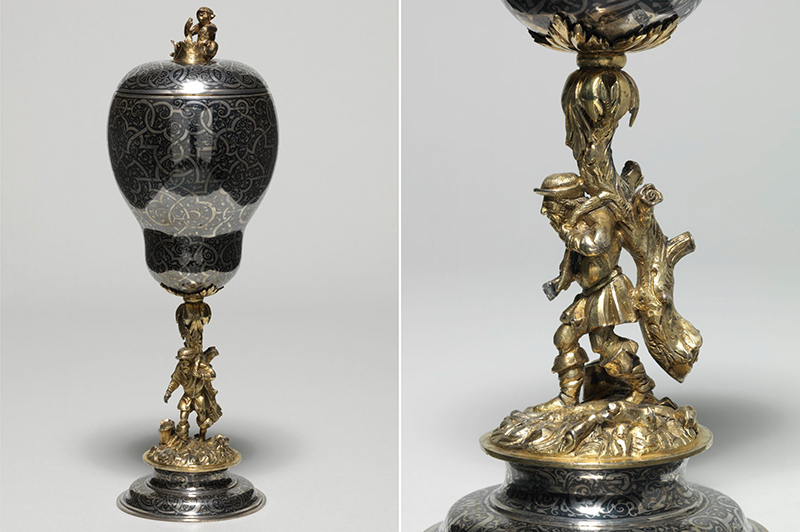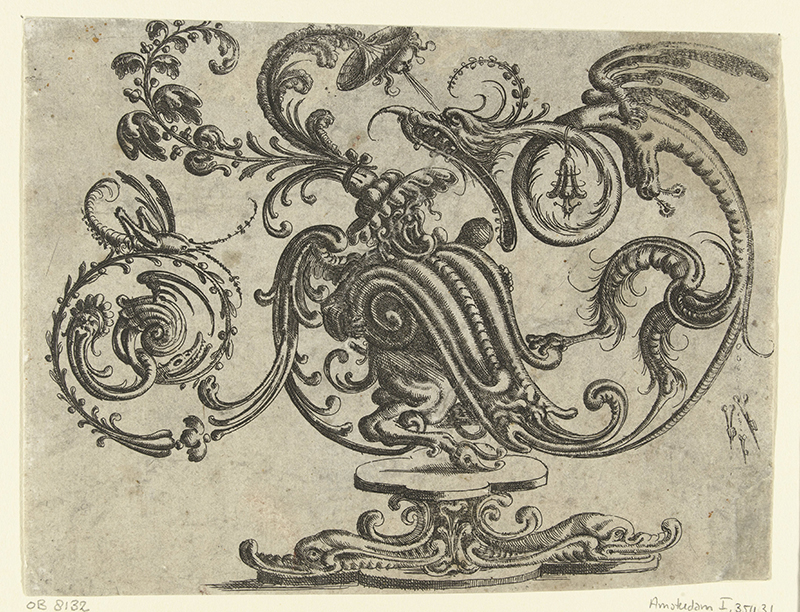The images gathered under the title pages of Jamnitzer’s booklet and others of its kind have, since the early 19th century, been designated as “ornament prints.” Used to classify prints that offer patterns as well as those that envision tableware, furniture, and architectural elements, the term has designated a formal and functional lassitude. According to leading scholars of this genre, ornament prints allow artists to explore “purposeless fantasies.” Jamnitzer’s etchings have been described as “images that thematize play” and the assertion of “the powers of invention” by a “consummate gamester.” These 21st-century statements share with the scholarship of postwar German historians of art an association between the grotesque and “free fantasy . . . the abundant, bubbling imagination.”
While such assessments capture the tone of these prints, they have dangerously downplayed the ways in which the booklets engage in performative political speech. Focusing on the textual articulations of communality that frame design proposals, I wish to shift the emphasis from these prints as expressions of “artistic freedom” and consider printed booklets of design proposals as guidebooks to recognizing the political theory re-instantiated there as well as in metalwork objects.
“Insidious Silver” makes visible ways that wrought objects of gilded silver—and the printed images that stimulated their formation—legitimize the dispossession of Native American inhabitants of ore-rich terrains as well as the property owner’s fantasy of a continuous supply of labor. But my book also offers to its own moment—one fraught by unresolved battles over the restitution of material wealth and the inadequacies of provisions for recompense to the dispossessed—the hope that art can participate in newly configuring the relationship of law to land.
University of Pennsylvania
Ailsa Mellon Bruce Senior Fellow, spring 2022
Shira Brisman will return to her position as assistant professor in the History of Art department at the University of Pennsylvania, where she is also affiliate faculty in the departments of History and Germanic Languages and Literatures, as well as core faculty in the Visual Studies Program.


